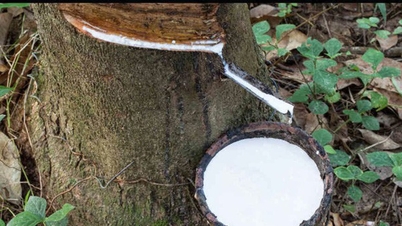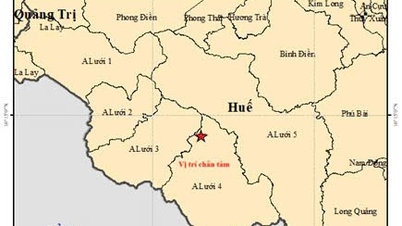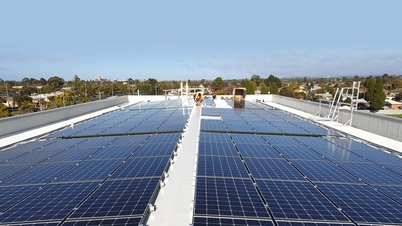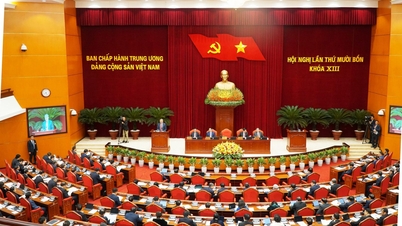Rubber price developments in major markets
The world rubber market recorded mixed fluctuations in the trading session on November 8. While prices on exchanges in China and Singapore increased, those in Japan and Thailand recorded a decrease.
Specifically, price movements at major exchanges are as follows:
- In Thailand (TCE): Rubber futures price for December 2025 decreased by 0.8%, equivalent to 0.6 Baht, to 65.8 Baht/kg.
- In Japan (OSE): Rubber futures for December delivery fell 0.8%, equivalent to 2.4 yen, to close at 306.8 yen/kg. Contracts for delivery in April 2026 also fell 0.96% to 310.1 yen/kg (about 2.06 USD).
- In China (SHFE): Rubber futures for January 2026 delivery rose 0.88%, or 130 yuan, to 14,950 yuan/ton. Butadiene rubber contracts for December 2025 delivery rose 2.18% to 10,305 yuan/ton.
- In Singapore (SICOM): Rubber contract for delivery in December 2025 increased 0.8%, trading at 169.5 US cents/kg.

Factors affecting the market
Concerns about the auto industry supply chain
Rubber prices in Japan fell as lingering concerns about the auto industry's supply chain weighed on investor sentiment, Reuters reported. The disruptions continued to affect the auto industry after the Dutch government took control of Nexperia, prompting China to halt exports of the company's finished auto chips. Car sales could directly impact demand for natural rubber, which is a key raw material for making tires.
Impact from financial and energy markets
Other market factors also weighed on rubber prices. The US dollar held steady at 153.98 yen, making yen-denominated assets such as rubber futures more attractive to foreign investors. Japan’s stock market also rebounded, with the Nikkei index rising more than 1%, boosting investors’ risk appetite.
A rebound in oil prices after hitting a two-week low was also a supportive factor. Natural rubber prices usually move in line with oil prices as they compete for market share with synthetic rubber, a product derived from crude oil.
Domestic rubber market situation
In contrast to the world fluctuations, the domestic raw rubber purchase price on November 8 remained stable. Below is the reference price list at some companies:
| Unit | Type of latex | Purchase price |
|---|---|---|
| Ba Ria Rubber Company | Latex (25-30 degrees TSC) | 405 VND/degree TSC/kg |
| DRC latex (35-44%) | 13,500 VND/kg | |
| Raw latex | 18,000 VND/kg | |
| MangYang Company | Latex (Type 1-2) | 394 – 399 VND/TSC |
| Mixed latex (Type 1-2) | 359 – 409 VND/DRC | |
| Phu Rieng Company | Miscellaneous latex | 390 VND/DRC |
| latex | 420 VND/TSC | |
| Binh Long Company | Latex (at the factory) | 422 VND/degree TSC/kg |
| Mixed latex (DRC 60%) | 14,000 VND/kg |
Notable business information
In another development, Haian Rubber, a Chinese tire maker, filed for an initial public offering (IPO) on the Shenzhen Stock Exchange. The company plans to issue 46.5 million shares, equivalent to 25% of its post-issuance capital.
Source: https://baolamdong.vn/gia-cao-su-hom-nay-811-the-gioi-trai-chieu-trong-nuoc-di-ngang-401232.html





![[Photo] "Ship graveyard" on Xuan Dai Bay](https://vphoto.vietnam.vn/thumb/1200x675/vietnam/resource/IMAGE/2025/11/08/1762577162805_ndo_br_tb5-jpg.webp)
















![[Photo] Heavy damage after storm No. 13 in Song Cau ward,...](https://vphoto.vietnam.vn/thumb/402x226/vietnam/resource/IMAGE/2025/11/08/1762575674947_cdn-nhandan-vn-images-22f099ca8bc7ae81aa2a8d3416a84bf8f38ba43bf90488f62bcb886c606a306d03ce26ae186b134ab7ebd6b3b7a70ffa12dcf3324a04b8d4b1eaada1adea065f-_img-0541-7441.jpeg)















![[Video] Hue Monuments reopen to welcome visitors](https://vphoto.vietnam.vn/thumb/402x226/vietnam/resource/IMAGE/2025/11/05/1762301089171_dung01-05-43-09still013-jpg.webp)







































































Comment (0)